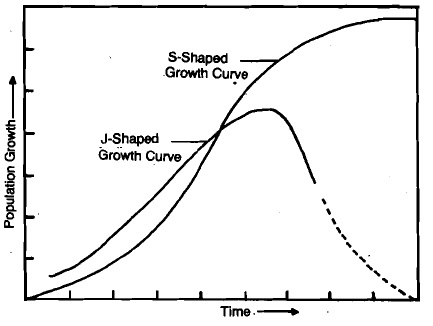The growth is the change in the size of the population over time. Growth is an important constituent of population ecology, that deals with the dynamics, of the species populations and their interaction with the environment. The study of the size owes to much demography. Regarding the population growth, the Thomas Malthus’ exponential law is the most fundamental in the population ecology. According to this law, the population grows or declines exponentially as long as the environmental conditions remain, constant for all the individuals of the population. In the population ecology, this principle provides the basis, to formulate the predictive theories, and the tests.

Growth of Population Over Time
For a small population, if the birth rate is slightly above the death rate, then the population grows exponentially, with a characteristic curve, known as the J-curve. The life history of the organisms is the sequence of the events, related to the reproduction, and survival. These events are occurring from birth to death. All the populations are made up of organisms, that reproduce in life. Over the cost of time, the organisms, have to devote the energy and other resources according to the physiological demands. For successful reproduction, an appropriate growth in the population is required.
Limits to the Population Growth
- Generally, the growth of the population over time is governed by the two major themes.
- If the resources of the environment are limited, then it leads to the limited growth of the population.
Environmental Factors and Growth
The growth of the population is controlled by environmental resources. Few populations can live up to their biotic potential, which is a state where they experience the ideal conditions, and every member has the access to the shelter, and the food, there are no pathogens or predators in the environment. As all of the conditions are favorable, so maximum reproduction is favored. Typically, after crossing the level of the exponential growth, the growth level stops and after that, it starts declining. It happens when the maximum carrying capacity is reached.
Growth and Limiting Factors Are Interlinked
The population may decline due to the limiting factors such as the shelter, food, water, minerals, predators, the buildup for the waste materials, and the shelters. These limiting factors prevent the populations to reach their maximum biotic potential. Sometimes the population can grow too large, and the population capacity is overreached. Due to the over-crowding, the parasites, pathogens, and the diseases spread much quicker. The population growth can also be reduced due to natural disasters, and man-made factors.